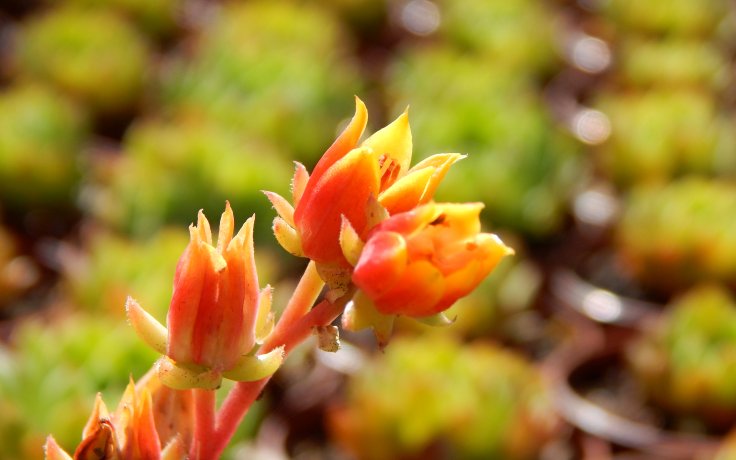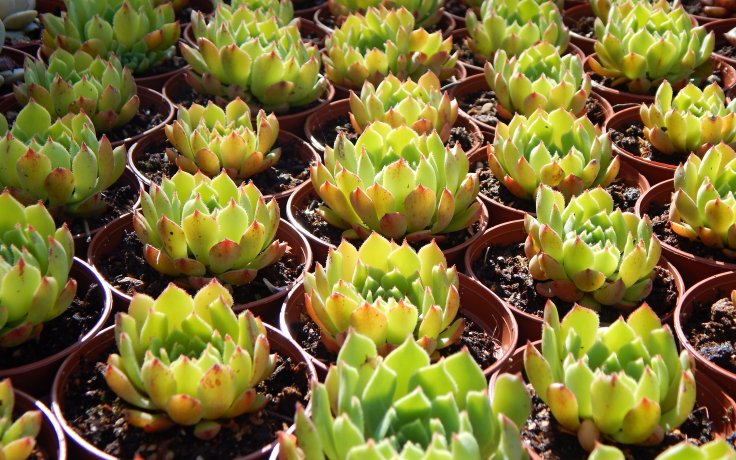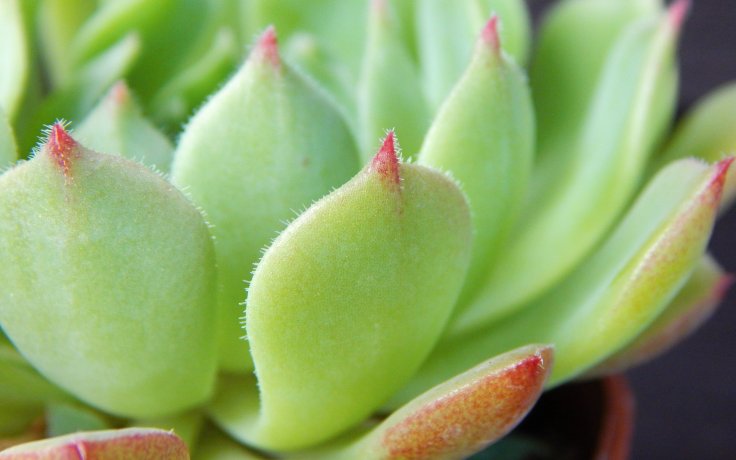- Home
- Succulents
- Echeveria
- Echeveria Derosa





Echeveria Derosa
Place ideally in a sunny position.
Always water a few days after the substrate has dried out. Reduce watering in winter.
It can tolerate -1.1 °C in the short term. The plant is not hardy.
It can be easily propagated by single leaves. Just place the leaf on the substrate and it will root easily in most cases.
Echeveria Derosa, synonym of Echeveria Worfield Wonder, is probably a hybrid of Echeveria derenbergii and Echeveria setosa. Since Echeveria Derosa was crossed by different growers with different clones of the parents, the resulting hybrids differ in leaf pubescence. Thus, we can find specimens with dense hairs, but also those with a minimum of hairs, concentrated rather on the leaf margins.
Echeveria Derosa forms rosettes of light green spoon-shaped leaves with reddish tips and finely hairy margins. The leaves are elongated and fragile, up to 5 cm long. The rosettes most often grow as a groundcover, but over time the plant forms a low shrub with a rosette diameter of up to 15 cm. Offsets tend to form less.
In late spring it blooms into red bell-shaped flowers with yellow tips. The flowers appear in racemes on stalks, which are usually unbranched and bear small, bristly leaves.
Water generously during the growing season and always allow the soil to dry out completely before watering again. In winter, water sparingly, just enough to keep the plant from shriveling. If you are growing in a pot with a saucer, be sure to pour off any excess water after watering. Echeveria Derosa is safe to grow near children and pets as it has no reported toxic effects. Propagation of Echeveria is easy. Simply separate the individual leaves, place them on a substrate and allow them to root. It changes colour and shades of green throughout the year, adding dynamism and freshness to the interior.